Table of Contents
Introduction to Paprika Types
Paprika is a versatile spice with five distinct main varieties: sweet, smoked, hot, Hungarian, and Spanish. Each type has unique flavor profiles, origins, and culinary applications. According to the United States Department of Agriculture (USDA), paprika is rich in vitamin A (from beta-carotene) and antioxidants, making it both flavorful and nutritious. Understanding these differences helps you select the right paprika for specific dishes and maximize flavor in your cooking.
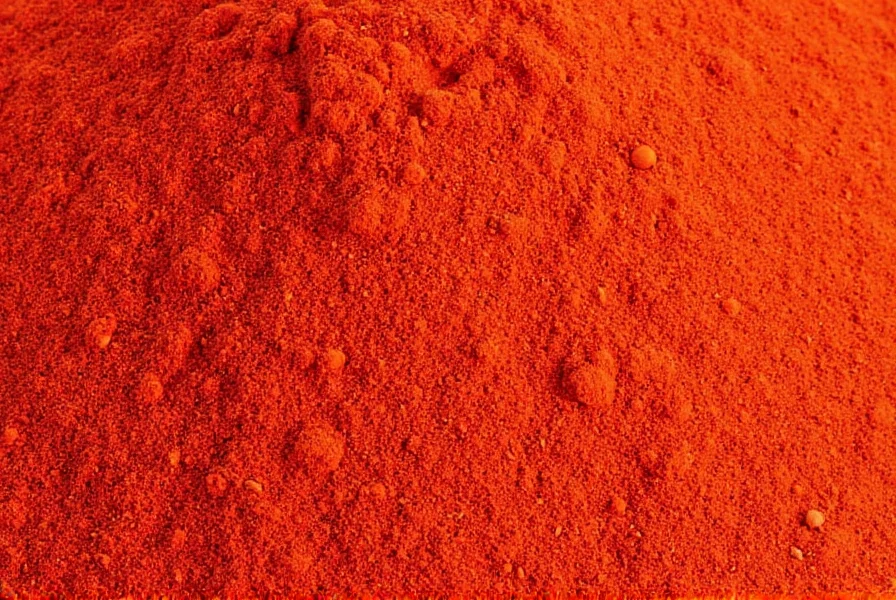
5 Main Paprika Varieties
| Type | Flavor Profile | Spiciness Level | Origin | Best Culinary Uses |
|---|---|---|---|---|
| Sweet Paprika | Mild, slightly sweet, earthy | None (0 Scoville) | Spain, Hungary | Spanish paella, roasted vegetables, deviled eggs, meat rubs |
| Smoked Paprika (Pimentón) | Deep smoky, rich, complex | None (0 Scoville) | Spain (La Vera region) | Chorizo, grilled meats, soups, vegan "bacon" recipes |
| Hot Paprika | Spicy, bold, peppery | High (500-1,000 Scoville) | Mexico, India | Chili con carne, salsas, curries, spicy rubs |
| Hungarian Paprika | Earthy, sweet, nuanced | Mild to medium (100-500 Scoville) | Hungary (Kalocsa/Szeged) | Goulash, paprikás csirke, stews, tomato-based sauces |
| Spanish Paprika (Pimentón de la Vera) | Smoky, sweet, fruity | Mild (0-100 Scoville) | Spain (La Vera region) | Patatas bravas, seafood dishes, tapas, roasted potatoes |
Sweet Paprika (Paprika Dulce)
Sweet paprika is made from dried, non-spicy red peppers and offers a delicate, slightly sweet flavor without heat. According to the USDA Food Database, it contains high levels of beta-carotene, providing over 50% of the daily vitamin A requirement per tablespoon. It's essential in Spanish cuisine for dishes like paella and romesco sauce. For optimal flavor, use it in dry rubs for chicken or sprinkle over roasted carrots.

Smoked Paprika (Pimentón)
Authentic smoked paprika is made by slowly drying peppers over oak fires for 10-15 days, creating a deep, complex smokiness that can't be replicated with liquid smoke. The European Union's Protected Designation of Origin (PDO) ensures only Pimentón de la Vera from Spain's La Vera region meets strict quality standards. Use it in smoked tofu, barbecue sauces, or to add depth to vegetarian chili. For best results, add it near the end of cooking to preserve its delicate aroma.
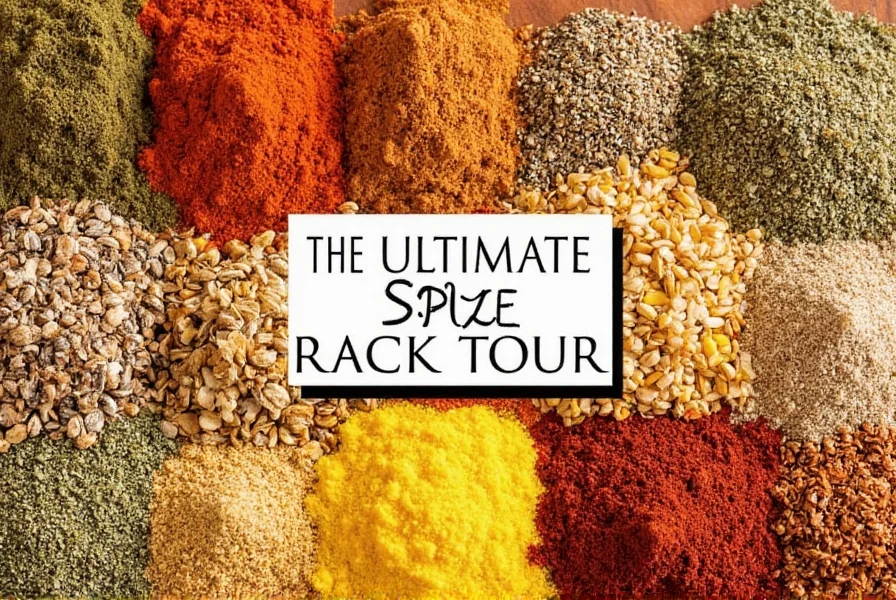
Hot Paprika
Hot paprika is made from spicy peppers like cayenne or jalapeño, delivering a fiery kick. Unlike chili powder (which contains cumin and oregano), pure hot paprika is 100% ground peppers. The Scoville scale ranges from 500-1,000 units, making it milder than cayenne but hotter than sweet varieties. It's ideal for Mexican salsas, Indian curries, or spicy roasted nuts. Always start with half the recommended amount and adjust to taste, as heat levels vary significantly between brands.
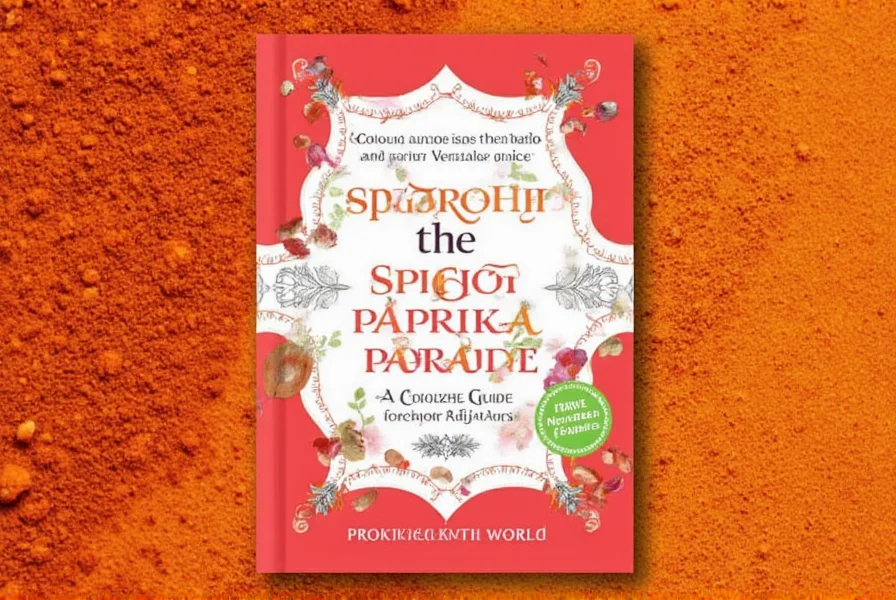
Hungarian Paprika
Hungarian paprika is renowned for its superior quality due to ideal growing conditions in Kalocsa and Szeged regions. The soil's volcanic composition and climate produce peppers with exceptional flavor and color. Traditional stone-grinding preserves natural oils, giving it a rich, earthy sweetness. The USDA classifies it as a high-antioxidant food. Use it in traditional Hungarian goulash or to enhance tomato-based sauces. Look for "superior" or "special quality" grades for authentic taste.
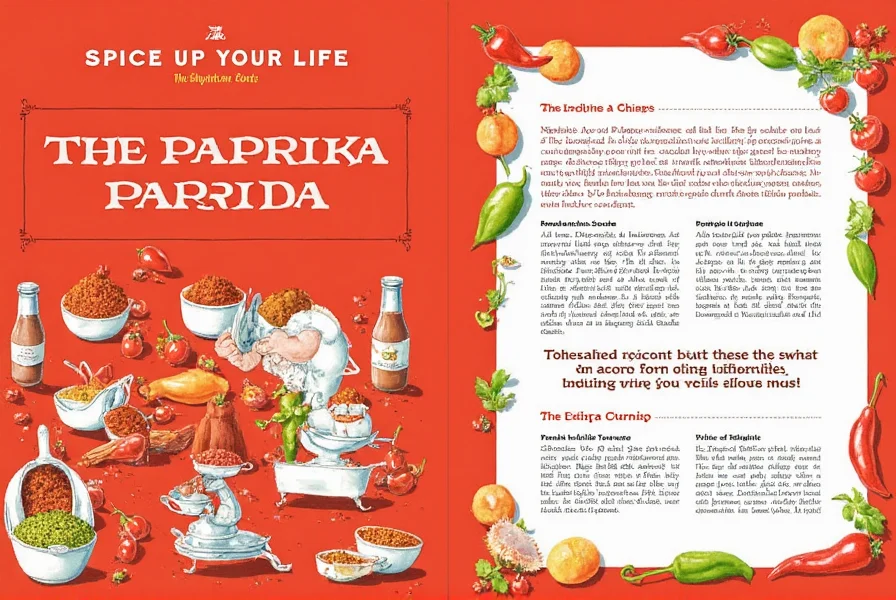
Spanish Paprika (Pimentón de la Vera)
Spanish paprika, specifically Pimentón de la Vera, is protected by EU regulations requiring oak-smoked peppers and strict production methods. It has a unique fruity-smoky profile from ñora peppers. The FDA recognizes it as a safe food additive with no artificial preservatives. Use it in patatas bravas, seafood dishes, or to add smokiness to vegan recipes without meat. Always check for "dulce" (sweet), "agridulce" (bittersweet), or "picante" (hot) labels to match your dish's needs.
Culinary Uses & Expert Tips
Maximize paprika's flavor with these evidence-based techniques:
- For roasted vegetables: Toss carrots or sweet potatoes with sweet paprika, olive oil, and honey for caramelized sweetness.
- For chili con carne: Use hot paprika (not chili powder) for pure pepper heat. Add 1 tsp per pound of meat for balanced spice.
- For vegan "bacon": Smoked paprika is essential—combine with liquid smoke and maple syrup for authentic flavor.
- For sauces: Stir Hungarian paprika into tomato sauce 5 minutes before finishing to prevent bitterness.
- Storage tip: Keep in airtight containers away from light. Refrigerate for 12+ months of freshness (USDA Food Safety Guidelines).
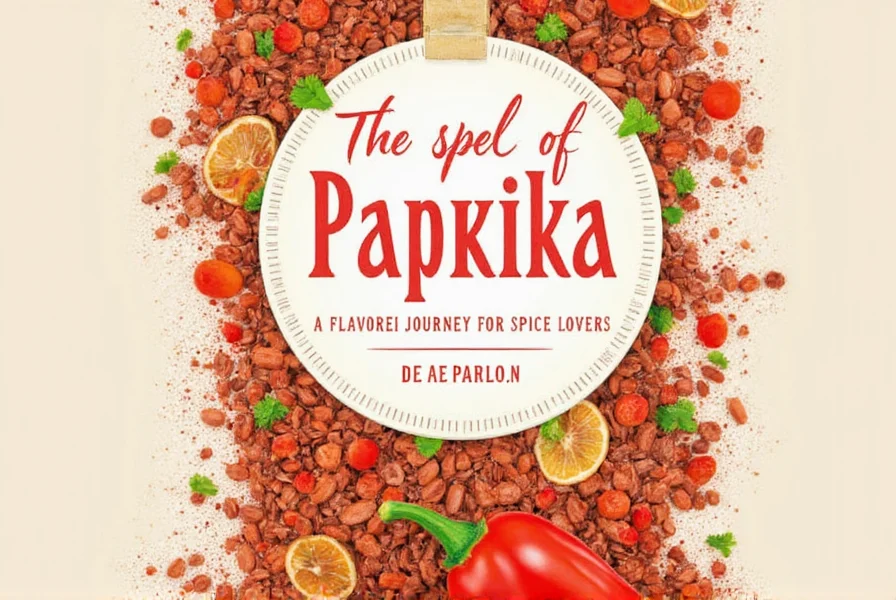
Paprika FAQs
What's the difference between paprika and chili powder?
Paprika is made exclusively from ground red peppers, while chili powder is a blend of chilies plus cumin, garlic, and oregano. Paprika has a smoother texture and more vibrant red color. For authentic chili flavor, use paprika alone and add other spices separately.
How long does paprika last before losing flavor?
Properly stored paprika maintains peak flavor for 12-18 months. The USDA recommends replacing it when color fades from bright red to dull orange or when aroma weakens. For maximum shelf life, store in opaque containers in the refrigerator (not freezer).
Can I substitute one paprika type for another?
Yes, but with adjustments: Sweet paprika can replace Hungarian paprika 1:1. For smoked paprika, use 1/2 tsp liquid smoke + sweet paprika for similar flavor. Hot paprika should be reduced by 50% when substituting for sweet varieties. Never substitute hot for sweet in equal amounts without reducing other spices.
Why is Hungarian paprika considered superior?
Hungarian paprika benefits from volcanic soil in Kalocsa/Szeged regions, producing peppers with 30% higher beta-carotene than standard varieties (USDA Agricultural Research Service). Traditional stone-grinding preserves natural oils, resulting in richer color and flavor. Look for "superior" grade for authentic taste.
What gives smoked paprika its distinctive flavor?
Authentic smoked paprika uses oak wood fires for 10-15 days during drying, creating complex phenolic compounds. The EU PDO certification requires specific pepper varieties (Ñora, Jaranda) and traditional methods. Liquid smoke cannot replicate this—only proper smoking produces the characteristic depth.
Is paprika safe for vegan cooking?
Yes, paprika is naturally vegan and enhances plant-based dishes. Smoked paprika adds "meaty" depth to lentil stews, while sweet paprika improves roasted vegetables. The FDA confirms it's a safe, non-GMO spice with no animal products. Many vegan "bacon" recipes rely on smoked paprika for authentic flavor.
Does paprika have health benefits?
Yes. According to the USDA, paprika contains 2,600 IU vitamin A per tablespoon (52% daily value), plus vitamin E and capsaicin. Studies in the Journal of Food Science show carotenoids support eye health and immune function. Hungarian paprika has 20% higher antioxidant levels due to traditional processing.
How should I store paprika to maintain freshness?
Store in airtight, opaque containers away from light, heat, and moisture. The USDA recommends refrigeration for 12+ months. Avoid clear containers or storage near stoves. Never refrigerate without sealing—moisture causes clumping. For maximum potency, replace annually.
Buying Guide & Brand Recommendations
Selecting high-quality paprika requires understanding key factors. According to the European Union's PDO standards and USDA food safety guidelines, look for these indicators:
- Color: Vibrant red (not orange or brown)—indicates freshness and high carotenoid content.
- Aroma: Strong, sweet scent—dull or musty smells mean degradation.
- Ingredients: Only "paprika" or "red pepper"—no fillers, anti-caking agents, or artificial colors.
- Origin: For Spanish smoked paprika, look for "Pimentón de la Vera" and EU PDO certification. Hungarian paprika should specify "Kalocsa" or "Szeged".
Premium Brands (Professional Chefs' Choice):
- La Posta: Spanish smoked paprika with EU PDO certification. Ideal for authentic paella and chorizo.
- Espalda: Hungarian "superior" grade paprika from Szeged. Perfect for goulash and stews.
- McCormick Gourmet: USDA-tested sweet paprika with consistent flavor for everyday use.
Budget-Friendly Options:
- Kraft: Reliable sweet paprika for basic recipes—check expiration dates for freshness.
- Spice Islands: Good-value smoked paprika with clear origin labeling.
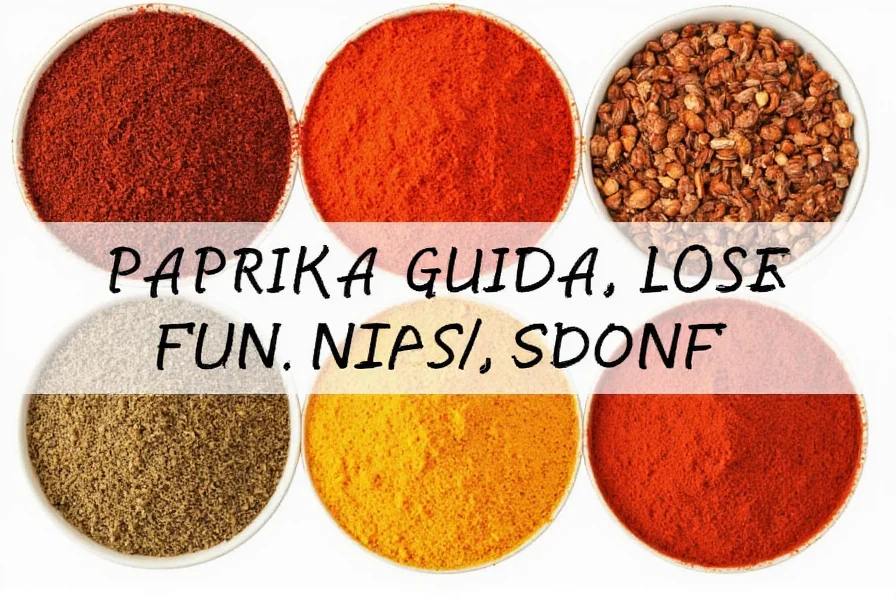
Conclusion
Paprika is more than a simple spice—it's a culinary tool with five distinct varieties, each offering unique flavors and applications. Understanding these differences allows you to enhance dishes precisely, whether you're making Spanish paella with sweet paprika, vegan "bacon" with smoked varieties, or spicy chili with hot paprika. Always prioritize freshness (vibrant color, strong aroma) and source quality (EU PDO or USDA-certified brands) for best results. With this knowledge, you'll transform ordinary meals into extraordinary experiences.
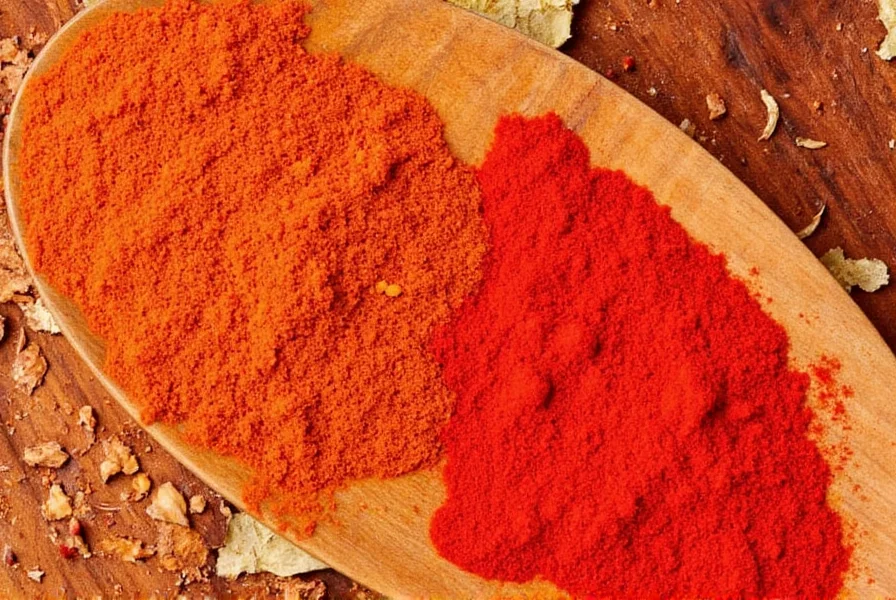

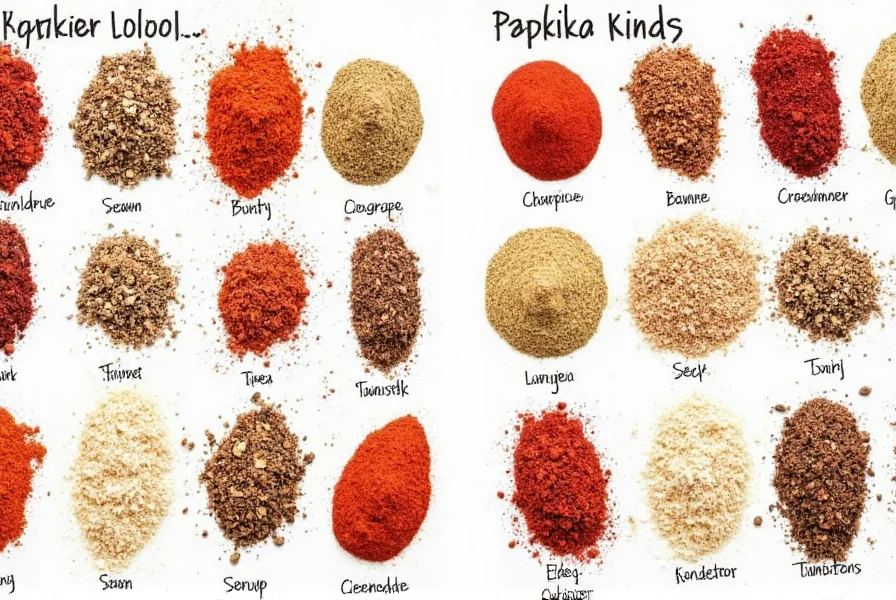









 浙公网安备
33010002000092号
浙公网安备
33010002000092号 浙B2-20120091-4
浙B2-20120091-4